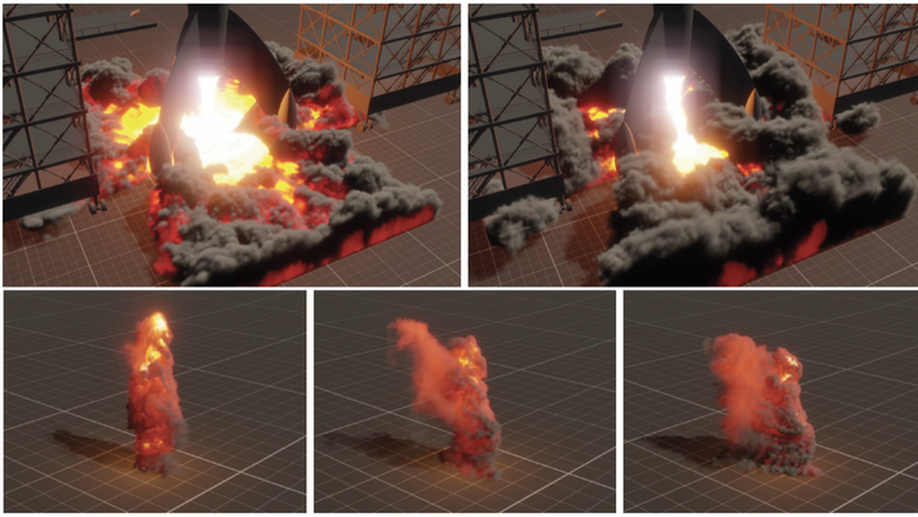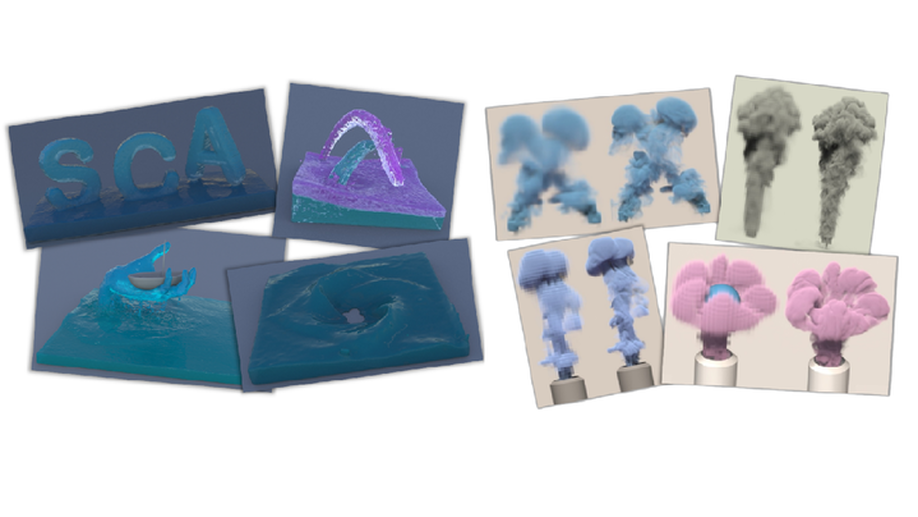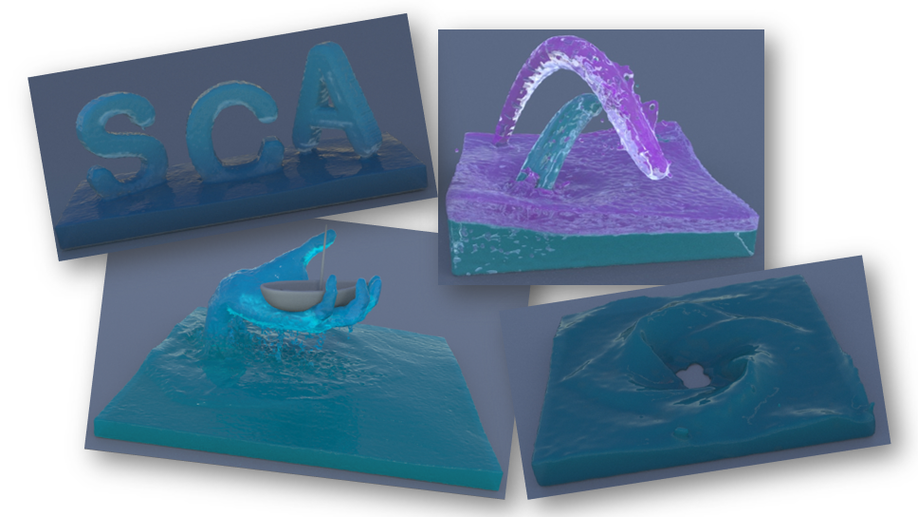
Compact Poisson Filters for Fast Fluid Simulation
Poisson equations appear in many graphics settings including, but not limited to, physics-based fluid simulation. We propose a new Poisson filter-based solver that balances between the strengths of spectral and iterative methods. We derive universal Poisson kernels for forward and inverse Poisson problems, leveraging careful adaptive filter truncation to localize their extent, all while maintaining stability and accuracy.

Tools for Fluid Simulation Control in Computer Graphics
Physics-based animation can generate dynamic systems of very complex and realistic behaviors. Unfortunately, controlling them is a daunting task. In particular, fluid simulation brings up particularly difficult problems to the control process. This thesis presents two projects. First, we introduce a new particle-based liquid control system based on precomputed liquid animations. Second, a tracking solution for smoke upresolution is described.

Particle-based Liquid Control using Animation Templates
It is notoriously difficult for artists to control liquids while generating plausible animations. We introduce a new liquid control tool that allows users to load, transform, and apply precomputed liquid simulation templates in a scene in order to control a particle-based simulation.
A Density-Accurate Tracking Solution for Smoke Upresolution
Controlling smoke simulations is a notoriously challenging and tedious task. We propose a tracking procedure where we optimally modify the velocity field of the simulation in order to make the smoke density distribution closely follow the low-resolution density in both space and time.